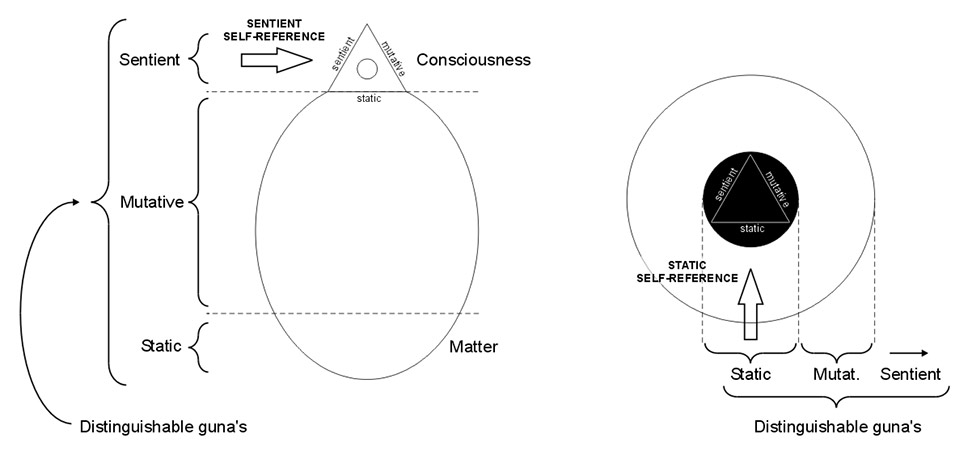Logic of Axiomatic Action Potentials ("Guna's") in Philosophy and Physics Sarkar once described the spiritual path as a "supreme subjective synthesis". In that respect, science and spirituality may not be very different, only the initial motivation is. In terms of axiomatic guna logic, the two viewpoints are reflected in how the "guna's" (axiomatic action potentials) are distinguished after the onset of auto-genesis.
These seemingly antithetic viewpoints regarding the identification of the guna's, philosophically resp. physically,
are reconciled through the axiomatic theorem that the guna's, rather than being ambivalent, are fundamentally indistinguishable. This primordial phase is called homeomorphic evolution. In other words, the reason why in the primordial phase the guna's are said to be indistinguishable, is that after the auto-genesis, when the guna's cán be distinguished, their distinction depends on the point of view. An alternative approach to axiomatic guna logic is to investigate the "edge of equilibrium", right on the brink of auto-genesis. It is a "new line of thinking", blending, rather than transcending, the purely philosophical and the physical. This is Sarkar's "Four Chamber" theory (microvita cosmology) "on the boundary of matter and abstract". In microvita theory, one could say that the "svabhava" or flow of self-reference (Causal Matrix recurrence) is fully implied, that is, built-in the very concept of microvita. In this case, the term "guna's" is not utilized by Sarkar at all. Either way, the reality of opposing spiritual and physical perceptions is far from trivial. It is probably what triggers the two-edged sword of semantics - the routine of attributing meaning to an ever-changing universe. This condition is known as "Maya" or "illusion". |
